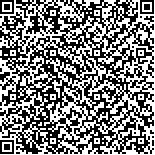下载中心
优秀审稿专家
优秀论文
相关链接
摘要

对月球探测任务、月球遥感制图技术与产品进行综述。从1958年开始,全世界已开展126次(其中70次成功)月球探测工程任务,其中月球遥感制图是其必需的基础性工作。由于月球环境的特殊性,其遥感制图技术与对地观测制图相比具有很大的挑战和更大的难度。目前,中国嫦娥二号轨道器获取的7 m分辨率立体影像是覆盖全月球分辨率最高的立体影像数据,美国月球侦察轨道器LRO任务的激光雷达高度计LOLA数据是精度和密度最高的激光测高数据,LRO NAC影像的分辨率最高(0.5-2 m)但未覆盖全球。在各个探测任务中,基于月球遥感数据和摄影测量技术,已经制作了大量的全球及区域的影像拼图、正射影像图和数字高程模型等制图产品。对月球遥感制图技术发展进行展望,探讨了利用国际多探测任务数据建立新一代控制网和进行精细制图的必要性及技术思路。
This paper presents a review of lunar exploration missions and techniques, as well as the products of lunar mapping using remote sensing data. Since 1958, 126 lunar exploration missions have been carried out, and 70 of these missions were successful. Lunar exploration missions can be broadly classified into unmanned and manned missions, with unmanned probes mainly using an orbiter, a lander, and a rover. Lunar surface mapping using remote sensing data is one of the fundamental tasks in these missions and is critical to support other science or engineering tasks. Lunar mapping is more challenging and difficult compared with Earth mapping because orbit and attitude determination is of relatively low accuracy, a global navigation satellite system is lacking, obtaining ground truth for geometric and radiometric calibration is difficult, and the lunar surface is a desolated environment with poor image texture.
A vast amount of remote sensing data have been acquired from successful missions. The two primary data sources for lunar mapping are orbital optical images and laser altimeter data. Among the optical images, the Chang'E-2 stereo images cover the entire moon surface with 7 m resolution, and the narrow-angle images of the lunar reconnaissance orbiter camera offer the highest spatial resolution of up to 0.5 m but with limited coverage. Among the laser altimeter data, the lunar orbiter laser altimeter data of the lunar reconnaissance orbiter show the highest precision and density. Orbital remote sensing data provide facilitate global and regional mapping with medium and high resolutions, where slander and rover images offer the highest resolution (up to millimeter level) for the detailed mapping of the landing site and traversing area.
Photogrammetric techniques, including geometric sensor modeling, image block adjustment, stereo image matching, space intersection for 3D position computation, and DEM and orthophoto generation, have been developed by the planetary mapping community for lunar mapping from orbiter, lander, and rover images. The rigorous sensor models of orbital images are usually established by collinearity equations with interior and exterior orientation parameters. Bundle adjustment is a rigorous block adjustment method that simultaneously solves exterior orientation parameters and 3D ground points with high accuracy and consistency. A generic geometric model, with a rational function model as the representative, has been investigated and used in lunar mapping. Unlike rigorous sensor models, rational function models are simple and independent of sensors. It is particularly advantageous for integrated mapping using multiple images from the same orbiter or different orbiters.
Global image mosaics and global DEM have been produced by mission teams with resolutions ranging from tens to hundreds of meters. Sub-meter to meter resolution regional maps have been produced for scientific investigation orthe selection of landing sites. Centimeter resolution maps have been generated from lander or rover images to support in-situ investigations and rover traverse planning at landing sites.
Some future research directions of lunar mapping using remote sensing data are discussed at the end of the paper, along with the construction of a new-generation lunar global control network using the newly acquired multi-mission data, fine-resolution lunar mapping using multi-mission multi-coverage images, automated processing of huge amount of data, lunar mapping standards, data sharing, and international cooperation.

